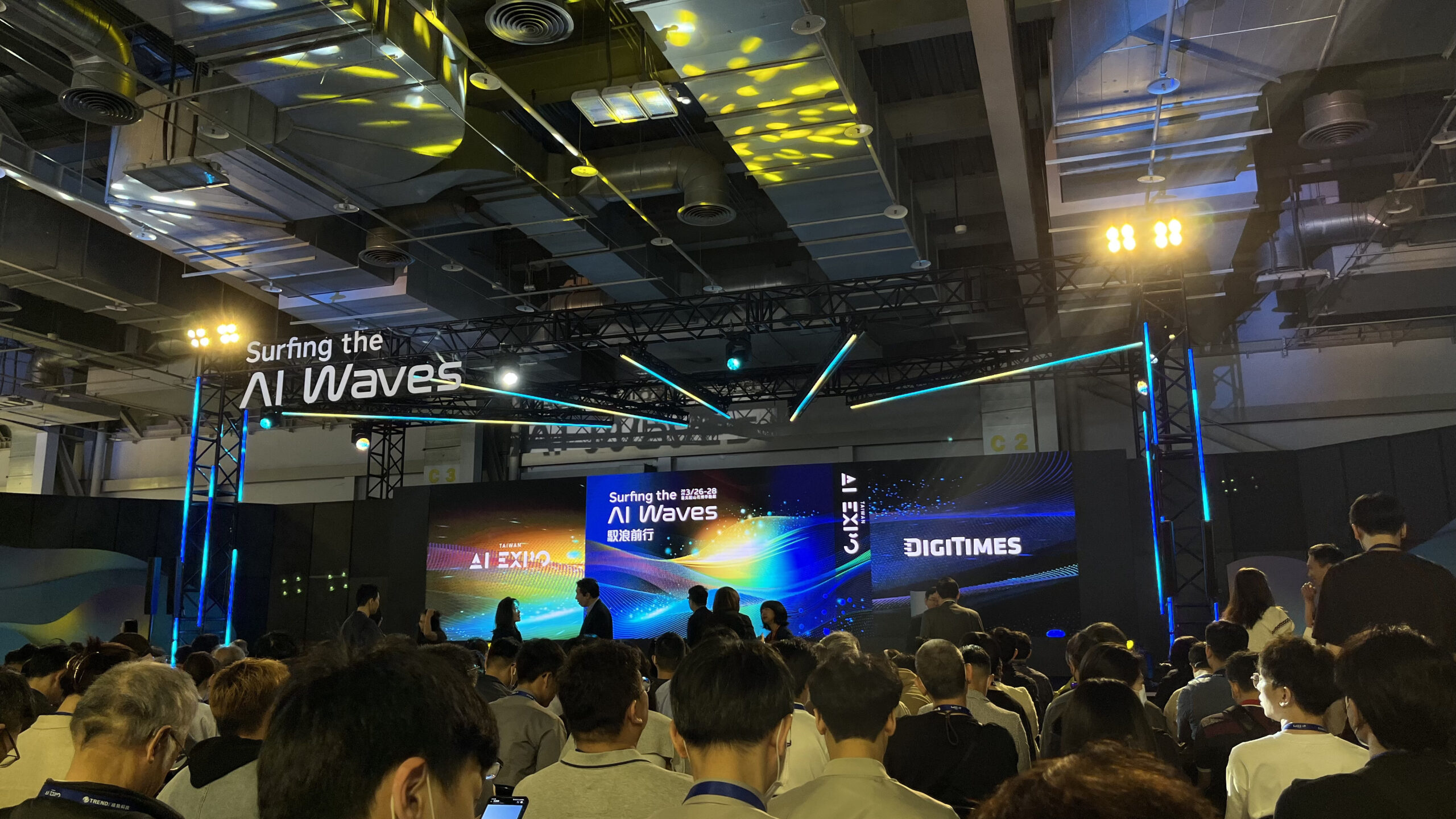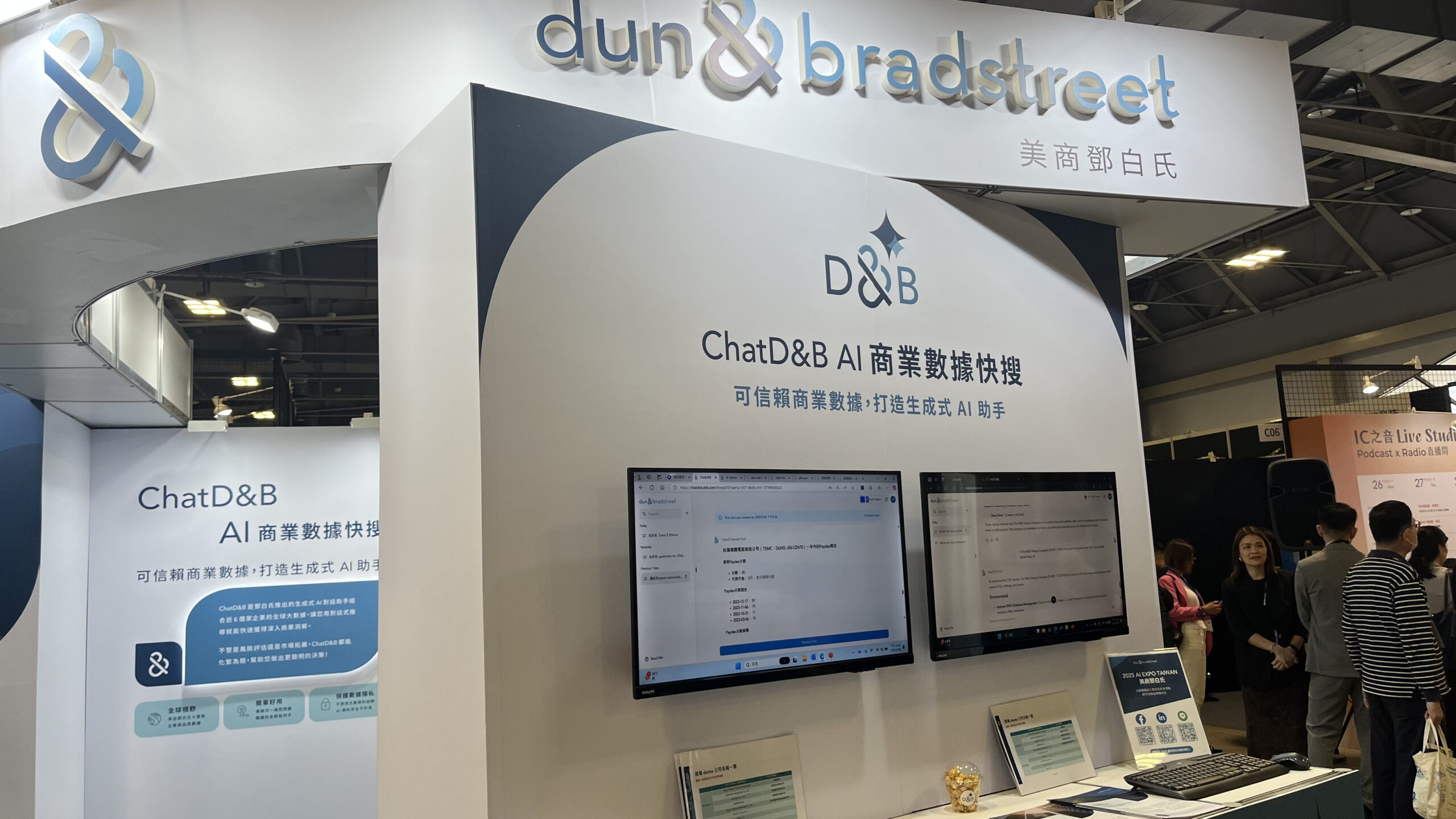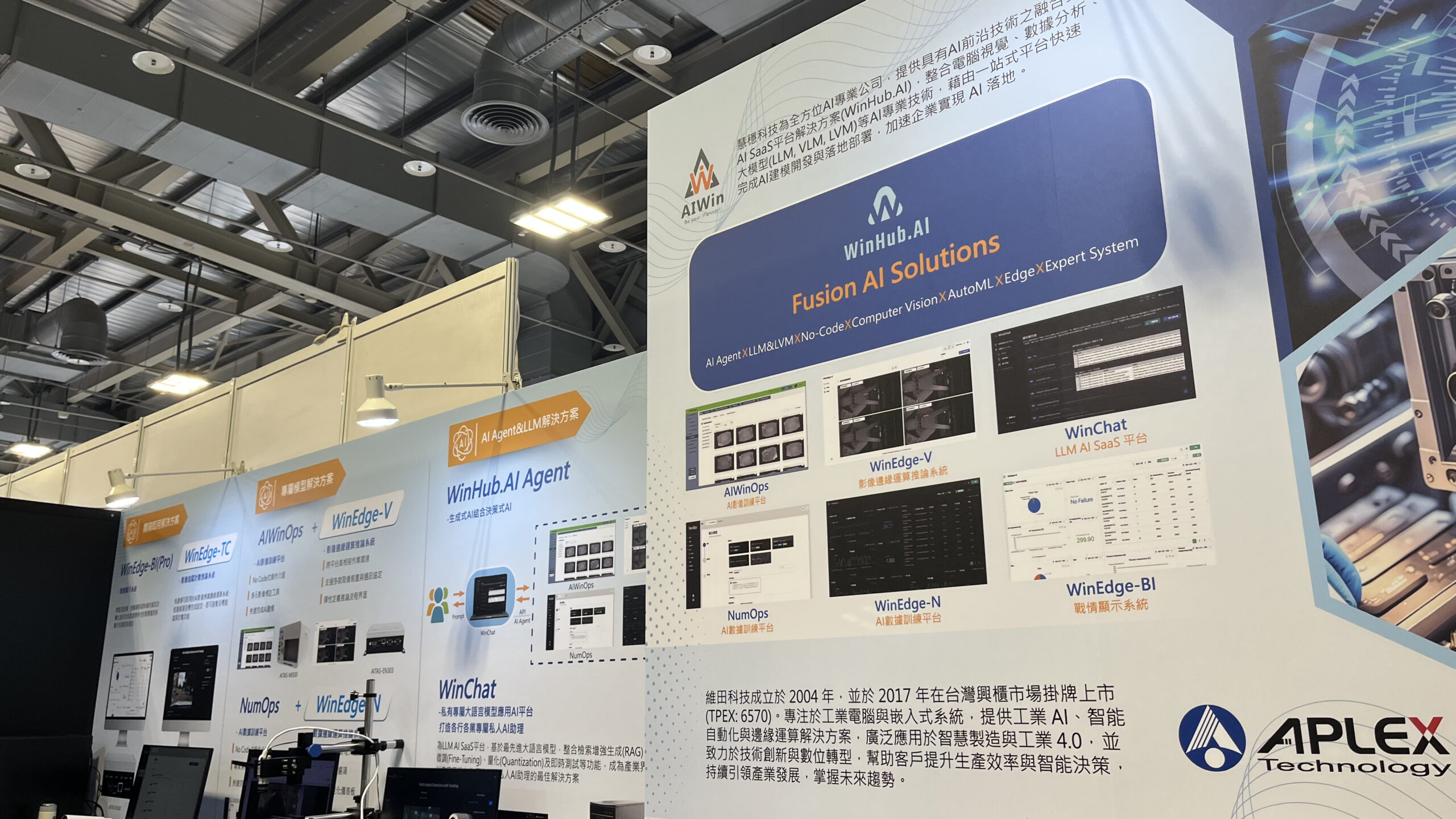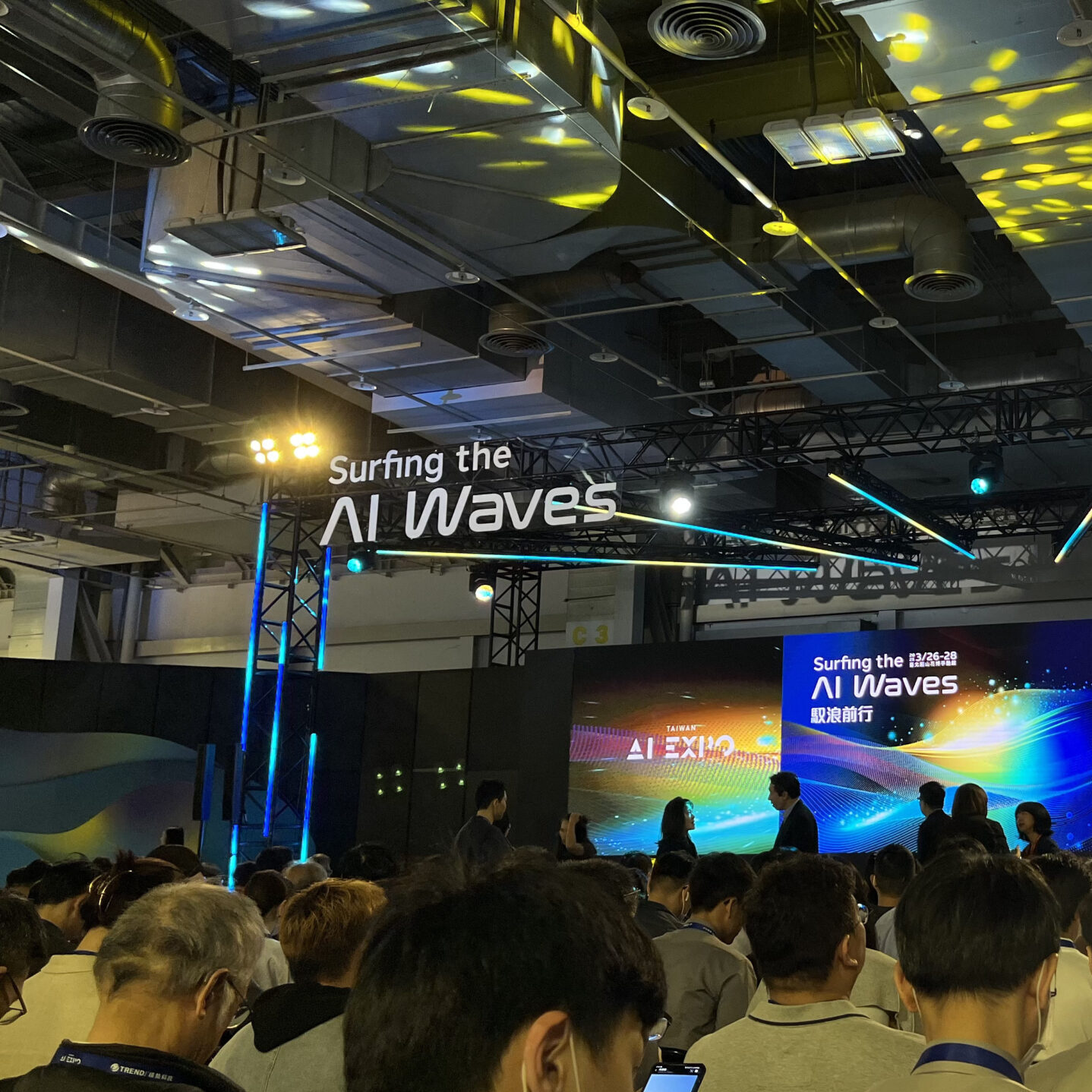By Sursha Wu
Introduction
In 2025, AI still leads the tech wave. Under the theme “Surfing the AI Waves,” AI EXPO Taiwan 2025 focuses on smart factories, AI chips, and core technologies and brings industry leaders to explore AI applications and future trends.
PowerArena highlights key insights from the expo to help manufacturers stay ahead, track AI developments, and plan effective strategies.

AI EXPO Taiwan 2025 reveals the next wave of AI trends and application directions for all industries.
Reshaping the Game: “AI makes prototyping easier, faster, and cheaper.” — Dr. Andrew Ng
Dr. Andrew Ng, Founder of DeepLearning.AI
AI enables companies to test ideas, prototype, and adapt strategies very fast.
Dr. Andrew Ng shared a story: on a Monday morning, he discussed an idea over breakfast with his team—by Tuesday afternoon, testing was already underway.
He stressed that this shift isn’t just about technology—it marks a fundamental change in company culture and how businesses operate.
When companies become comfortable with using AI regularly, the competitive gap widens quickly. Those that move fast and innovate with AI will gain a decisive edge over traditional players.
Open-Source Models Are Reshaping the AI Supply Chain — Scale Is No Longer Everything
Open-source or open model not only promotes knowledge sharing and speeds up AI adoption and innovation—it’s also changing the rules of competition. Countries and companies can shape the global markets by the ability of building AI model.
Also, as companies shift away from closed AI solutions toward open models, they gain greater flexibility and control.
Fine-tune AI models to meet specific industry needs.
AI enables businesses to solve problems at lower costs. What’s more, startups can now generate more value in less time than traditional giants.
AI is fundamentally changing the pace of innovation—not just in software, but across manufacturing, healthcare, finance, and beyond.
Whether it’s the sizes of AI model or the companies, the trend is clear: scale is no longer the only key to success.
Using the “Sandbox” Concept to Build Business Agility
For large enterprises, lengthy internal approval processes often slow down innovation.
To address this, Dr. Andrew Ng recommends adopting a sandbox strategy—a controlled environment for testing AI projects internally.
Within a sandbox, companies can:
- Restrict data access to prevent sensitive information leaks
- Run internal tests to validate feasibility before full rollout
- Minimize risk exposure so failures don’t harm brand reputation or customer trust
The sandbox approach allows organizations to test and iterate quickly while managing risk—ultimately improving agility in a fast-changing market.
Building on Existing Products with Gen AI
At this year’s expo, many companies showcased their Generative AI (Gen AI) capabilities by integrating language models into their core products and technologies.

Dun & Bradstreet integrated LLM capabilities into its data services, enabling customers to access information faster and more efficiently.

Winhub.AI helps companies build custom AI models for internal training and information retrieval.

Phison Electronics has launched a Gen AI training platform that offers online data search and automatic Word document generation features.
Industrial AI
With growing expectations around AI and Gen AI (Generative AI), the focus is shifting toward AI tailored for specific industries.
AI is shifting from a general tool to tailored solutions built for specific industries, enabling more precise problem-solving with dedicated resources.
Market Pain Points: Acting Fast
Across industries, one trend is clear: companies want more than just data—they want faster answers.
By using language models, businesses help customers find solutions quickly.
This shift reflects a new market expectation: It’s no longer just about collecting data, but about getting immediate answers or actions, often through AI Agents—systems that can make decisions and take action autonomously.
AI as an Assistant: Reducing Time on Routine Tasks
Agents are smarter. They’re proactive—capable of making suggestions before you ask for them…Based on this information, they offer to provide what they think you need, although you will always make the final decisions.
— Bill Gates
Today, assistant AI is one of the most practical and reliable directions for development.
Take manufacturing as an example: different products, environments, and management styles each create unique pain points—and addressing them requires deep domain know-how, often drawn from veteran supervisors and frontline workers. In these situations, generic or lightly modified models often fall short. Expert review is still necessary to ensure accurate, context-aware outputs.
However, AI Agents excel at handling repetitive tasks, speeding up operations such as time tracking, factory parameter setup, report generation and data formatting.
Once configured, an AI Agent can perform assigned tasks continuously and refine outputs using language models.
Let Humans Focus 100% on What Matters Most
Reasoning and creativity are irreplaceable human strengths.
When AI takes over manual, repetitive work like number crunching and daily reports, people can devote their 100% attention to what truly requires intelligence—such as analyzing data, diagnosing unusual production behavior, interpreting variables beyond the numbers.
Back to the Manufacturing: All Starts with Real Needs
Every AI application should start by identifying the problem.
— Managing Director, AWS Taiwan & Hong Kong, Robert Wang
Deployment should be driven by pain points.
AI implementation requires significant resources. Whether it’s adopting AI tools or smart manufacturing solutions, every deployment should be rooted in solving a real operational challenge.
For example: If warehouse management is too labor-intensive, robots can automate storage tasks. If drone delivery is too costly, computer vision can improve precision and reduce expenses.
Technology should solve problems and create value.
No matter how fast AI evolves or what new trends emerge, manufacturers should focus on technologies that truly solve problems and create measurable impact.
That’s the only way AI becomes more than a buzzword—it becomes a real asset to the factory.
Tips for Manufacturers: Start Small, Aim Precisely
If the problem is clear, the solution can be simple: precise, purpose-built AI.
Therefore, rather than investing heavily in large-scale models meant to cover the entire factory or organization, it’s more effective to build small, domain-specific models with deep industry expertise. These should focus on solving challenges in specific roles or scenarios.
Conclusion 1: Precision Over Speed and Scale
Large language models once drew attention for their ability to generate content quickly and at scale.
However, insights from AI EXPO Taiwan 2025 reveal a clear shift:
Companies are moving toward tightly integrating generative AI with real industry needs, distancing themselves from generic, one-size-fits-all LLMs.
The focus is no longer on scaling up—it’s about building precise, purpose-built AI tailored to specific use cases and real-world scenarios.
An AI solution—whether generative or otherwise—only creates value when it truly solves a problem. Otherwise, it’s just an abstract concept or a fancy text generator, not a business asset.
Download Case Study: Compal X PowerArena- LLM for Production
Conclusion 2: Digitalization Still Determines AI Success
One clear trend from this year’s expo is the market’s growing demand for fast, effective problem-solving. AI Agents are now meeting that demand—especially for repetitive, rule-based tasks that can be fully automated.
However, in manufacturing, achieving the full potential of AI Agents depends on comprehensive data support. This includes production data, workforce information, environmental factors, workflows, and even management experiences.
That’s why we continue to advise manufacturers: Before adopting any AI solution or smart manufacturing system, prioritize your factory’s digital transformation and data readiness. Only with a solid digital foundation can you unlock the full value of your AI investment.
Table of Contents





